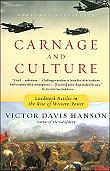| AUSTRALIAN ARMY COMBATIVE MINDSET TRAINING |
| The Australian soldier has been instructed in formalised unarmed combat training since the early 1940s. While this training was effective in many theatres of war, it was often given in an improvised and individualised manner and has relied on the skill sets of various individuals with a strong commitment and interest to the delivery of the training. |
| THE TWO FACES OF COMBATIVES |
| From the hoplological perspective, we clearly distinguish two primary types of
combative systems, (fighting arts). As raised several times over the years in HOPLOS, and most
recently in Donn Draeger’s article, “Understanding East Asian Combative Culture,”1 martial and
civil fighting are two areas of combative behavior that have evolved for different applications
under stimulus from different combative contexts. |
| Defensive vs Protective: |
The word mindset is often bandied about in combative training, though it doesn’t seem to be
easily defined nor well applied in practice. |
| HOPLOLOGY AND COMBATIVE CULTURE |
The second of a two-part interview conducted by Mark V. Wiley of Hunter B. Armstrong, HIS Director. The interview was initially published in “Martial Arts Talk” by Mark V. Wiley, Tuttle Publishing, 2000. |
| HOPLOLOGY AND COMBATIVE CULTURE |
This is the first of a two part interview conducted by Mark V. Wiley of Hunter B. Armstrong, IHS Director. The interview was initially published in “Martial Arts Talk” by Mark V. Wiley, Tuttle Publishing, 2000. |
| External versus Internal Focus |
Behavior and performance capabilities are dependent upon a
extremely wide range of factors. A great many of those factors, perhaps
most, are virtually uncontrollable. It then is incumbent upon the
individual who engages in combat to even more stringently enable himself
to learn to control those factors that he does have some control over. |
| India Trip Report |
Most of the trip was spent in Kerala interviewing and observing the gurukkal (teachers), training, and demonstrations of Kalaripayattu, the predominant native combative system of Kerala. |
| APPROACH - CLOSE - ENTRY |
Adversary combat includes three vital components - Approach, Close, Entry. These three components are inherently contained in classical combat training systems (i.e., pre-modern, non-pop fighting arts), and are vital parts of military small unit tactical training. |
| Training the Use-of-Arms Professional: Effect - Not Display |
Part 2
Here again it is important to distinguish between the use-of-arms professional and the amateur. Not in reference to occupation, the single biggest difference between professional and amateur is in the end goal or function of their pursuit of combative capability. |
| Training the Use-of-Arms Professional: Effect - Not Display |
Part 1
Combative training can have only varying limited degrees of influence upon
combat itself. A major factor concerning the effectiveness of combative
training in combat is whether one is training for effect or display. All
too often in modern training, display seems to be the driving factor. |
|
 |
|

![]()
![]()

